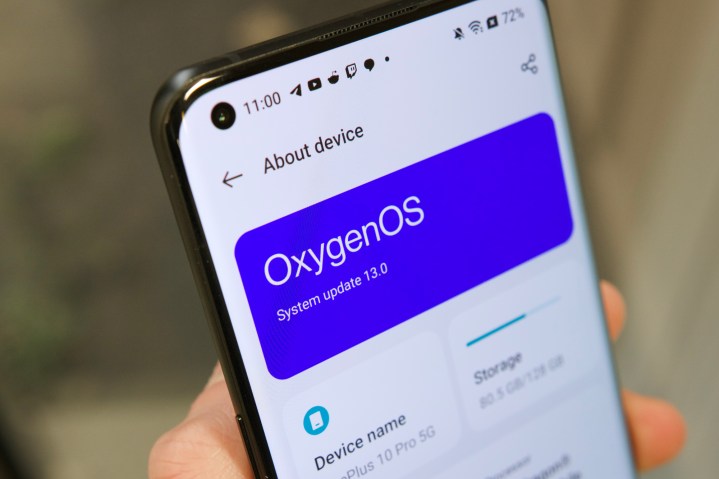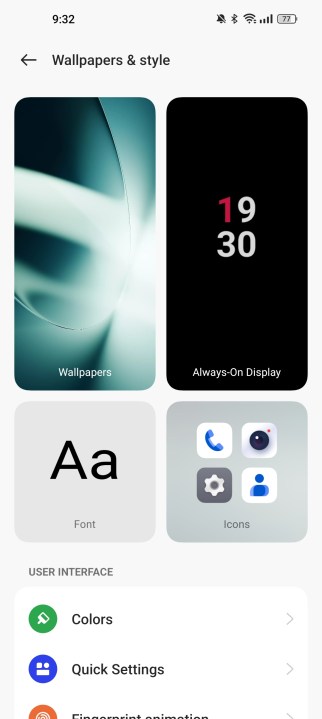When I picked up the OnePlus 10 Pro, I missed the old OxygenOS immediately. Gone was the fluid and feature-light software that made OnePlus phones such a great experience, replaced by the heavy, slower, and more annoying ColorOS-inspired software few liked as much. I liked it even less on the OnePlus 10T, and I wasn’t the only one.
I really like the OnePlus 11, but I wasn’t expecting to like OxygenOS 13 much. My early impression of ColorOS 13 was good, but I didn’t trust the newly Oppo-ified OnePlus enough to think it would carry over. But after using, and loving, the OnePlus 11 for several weeks, I no longer feel any animosity towards OxygenOS. Have I simply become used to it, or has the software actually got better?
What’s the problem with OxygenOS?

The software on your phone, and whether or not you like it, is a surprisingly personal thing. What irritates me may pass unnoticed by you, and the one feature you wish it had may not be something I considered essential at all. One size cannot fit all, and it’s a massive effort on the device manufacturers’ part to understand where to draw the line — and that’s before you add in the idiosyncrasies of localization, all of which makes building the perfect operating system impossible. It simply can’t please everyone all the time.
I know this, but it seemed like ColorOS never did. It sought to try and please everyone through endless customization, repeated prompts to try this feature or that mode, extending battery life through heavy-handed optimization, grabbing dubious “inspiration” from other software platforms to introduce copycat features of little value, and complicating the fundamentals with dense menus and confusing gestures. Don’t get me started on the default design and color schemes, and the sadly cartoony style, either.
Once OxygenOS began sharing the ColorOS code base, and inherited everything that made ColorOS terrible, it became the antithesis of the clean, speedy OxygenOS we once knew. I barely wanted to use ColorOS on an Oppo phone, and I certainly didn’t want to use it on a OnePlus phone. Yet, I was forced into that situation, and for a start, it was unpleasant. Now, though, both the software and I have mellowed.
Calm down, calm down

ColorOS needed to calm down, and when it did, I calmed down too. OxygenOS 13 on the OnePlus 11 isn’t anywhere near as intrusive and needy as before, and I’ve found it so much easier to live with. It puts feature suggestions at the top of the Settings menu, along with prompts to log into a OnePlus account, but it doesn’t send notifications or continually bother you about it. It sometimes gets uptight about Instagram using battery in the background, but it’s much less concerned about it, and also seems to have learned I want WhatsApp running all the time too.
The menus and animations are still a little slow compared to software like Samsung’s One UI, but somehow, the carefully designed haptic feedback minimizes my frustration. The use of primary colors for icons looks good against the black (if you use dark mode) backgrounds, and the icon designs, menu flow, and pre-installed app style are much improved through Oppo’s Aquamorphic design language. Features like Zen Mode are still there but aren’t shoved in your face.
The changes are subtle, like the alterations to the font and white space, which make it all more glanceable, and features that are always awful — like the Shelf window that swipes down in the same way as the notification shade — can be turned off completely. This is also a good example of where OxygenOS still fails, as activating and deactivating it is still clunky and long-winded, just like the stupidly complicated path to the OnePlus Buds Pro 2‘s headphone controls.
But the fact that the Shelf is not active by default, and goes away when you tell it, is evidence of positive change. Calming the software down, so it’s not so in-your-face and desperate for your attention, has worked wonders for OxygenOS — and made it possible for me to happily live with it. Or has it?
Getting used to the new OnePlus

Things are better in the world of OnePlus software, then. Yes, mostly, but there’s something else. OxygenOS is ColorOS, which also happens to be RealmeOS. That means over the course of a few months, I end up using one minutely different version of the software on multiple different phones. This continued exposure has inevitably softened my opinion, as I have become steadily more used to ColorOS’s foibles.
I’m aware this is happening, so my gradual acceptance of OxygenOS as it is today likely comes from two different places. First, it’s OnePlus and Oppo’s work on actually improving the software and minimizing the more hateful aspects. Second, it’s that I’m using it so much, I’ve learned to accept, get around, or compensate for all its little problems. Most people won’t be in this situation, but I’m sure just sticking with OxygenOS will have the same effect eventually.
It may not be the software I praised on phones like the OnePlus 8 Pro, but it’s better than ever.
But my dual-pronged acceptance wouldn’t be possible if OxygenOS’s problems remained as they did in earlier versions of the software. It may not be the software I praised on phones like the OnePlus 8 Pro, but it’s better than ever, and just saying that is a huge step forward for me.
I’m looking forward to OxygenOS 14, where I hope two see a continued push toward livability and frictionless everyday use. But in the meantime, I’m content to accept OxygenOS how it is, whether that only comes from improvements or the software’s way of doing things being banged into me like a drum too.






